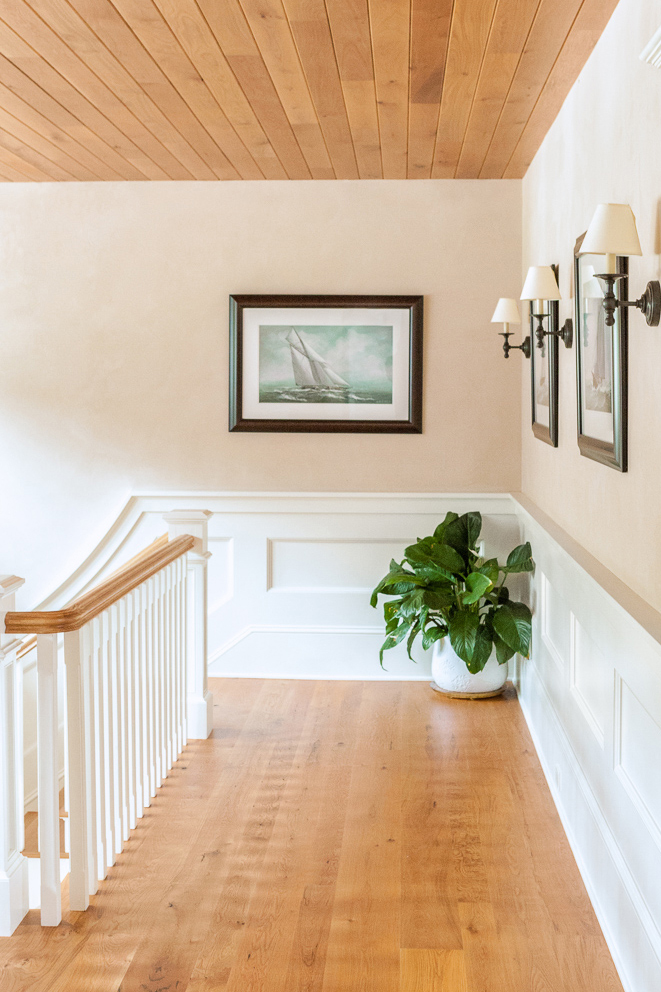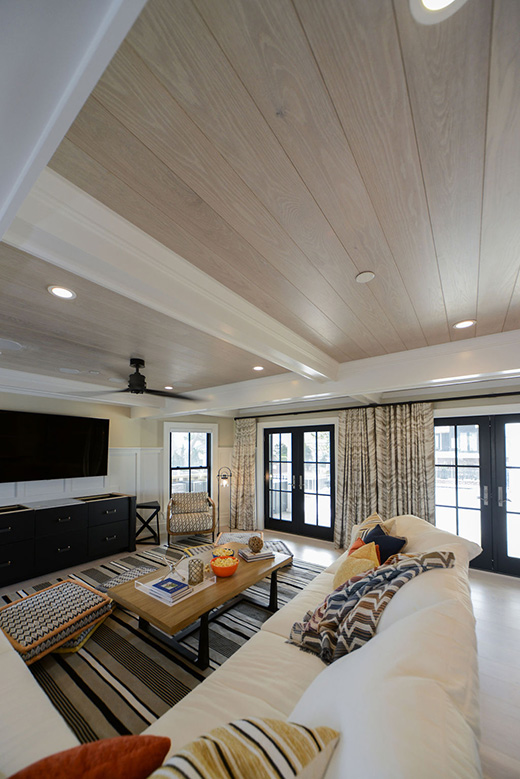Hardwood Ceilings: The Breathtaking Home Design Trend
Whether modern or rustic, hardwood ceilings can bring your interior design vision to new heights.
If you’re looking for a true statement home design, hardwood ceilings couldn’t be a more striking option. Hardwood ceilings are an increasingly popular new trend and for a good reason. Hardwood is such a gorgeous, remarkable material—why should it be limited to hardwood flooring? Wood ceilings add warmth and texture and offer a new way to explore creativity and design. Hardwood is also a sustainable and eco-friendly building material and a beautiful way to bring nature indoors. So, whether you want a cozy log cabin, coastal beach house, or a spacious modern loft, wood ceilings can add that je ne sais quoi to take any home design to the next level—especially when paired alongside a spectacular Carlisle hardwood floor.
The Hardwood Ceiling Trend
Hardwood ceilings are soaring in popularity for the depth and beauty they add to any space. Installation is fairly straightforward—with a nail through the tongue and glue on the rafters. The only limitations are your vision and imagination.
The Best Woods to Use in Hardwood Ceilings
While just about any hardwood will be a gorgeous material for ceilings, few woods are particularly well suited to this use. White oak is the most popular choice for ceilings, but other woods such as maple, cherry, birch, or hickory are also excellent choices for hardwood ceilings. These durable woods come in various stunning finishes ranging from light washes of color to dramatically dark with distinctive grains. Or, add vintage flair by using reclaimed hardwood in your hardwood ceiling. Delicate color variation and small marks add rich character for a truly one-of-a-kind ceiling.
Hardwood Ceiling Inspiration for Every Room
Step aside, Paris—hardwood ceilings are always a good idea. No matter which room or aesthetic, hardwood ceilings are a truly impressive work of art that will add visual interest and warmth to any space. Pair your hardwood ceiling with a beautiful Carlisle hardwood floor to enhance your room’s aesthetic. The two features will elevate and tie your desired look together perfectly.

-
-
- Modern. Timeless, sleek hardwood ceilings bring simplicity and refinement to life. Wooden ceilings make bright, airy spaces more welcoming and inviting, ensuring that even the most minimalist spaces feel personal. Hardwood ceilings are the way to go for a bold, contemporary look.
- Rustic. Reclaimed, weathered wood creates a wooden ceiling feature that captures the eye. Pick out multiple tones of planks for added dimension, texture, and contrast. With every step and glance upward, you’ll be reminded of the rich history—and future—of the building you’re standing in.
- Japandi-inspired. Select natural tones with organic imperfections to reflect the beauty of nature and pay homage to the tree. Overall, stay toward a lighter neutral ceiling for a cohesive Japandi feel. Simple minimalism has never looked better.
-
- Coastal. A wood ceiling in your home inspired by the coast will create a laid-back, easy, inviting air. Light washes of color with nickel-gap planks add brightness and evoke beachside memories, which is particularly effective in open-concept homes.
- Shabby chic. Hardwood ceilings can add worn elegance to any space, especially living rooms or bedrooms, with a shabby chic aesthetic. Wooden planks create warm comfort and a vintage appearance while providing visual balance to timeworn furnishings.
5 Hardwood Ceiling Design Tips

- Account for scale. Since the eye is further away from high ceilings, it’s important to scale the width accordingly. If the boards are too narrow, they might look too skinny and out of proportion.
- Select longer boards. Hardwood ceilings can create a beautiful illusion of expansiveness, but many joints can be visually disruptive. Pick out longer boards for a more streamlined, seamless final look.
- Opt for lighter colors. A lighter-toned hardwood ceiling will make the room feel open and airy, while darker colors can be too heavy or make the room feel smaller than it is.
- Consider a nickel gap. This trending design has the tongue milled longer than the groove, so there’s still a gap between boards when the boards are pushed tightly together. It’s the perfect detail for a coastal beach vibe, especially with a light or white-washed finish.
- Finish the boards before installation. Whether you buy prefinished or unfinished boards, finishing the boards beforehand will make life easier.
Don’t just stop at a hardwood floor. Using hardwood planks to create a ceiling feature is a creative and visually stunning way to add additional dimension to your home. Hardwood ceilings can elevate your interior design and bring your vision to new heights, from modern to rustic and polished to vintage.
FAQs: Hardwood Ceilings
What type of wood is best for ceilings?
There are a variety of different hardwoods that can be used for ceilings. Selecting the wood for your ceiling largely depends on individual preferences and factors like price and aesthetics. Of course, there’s no replacement for beautiful hardwoods like cherry. However, less costly hardwoods can also look beautiful in the right construction and finish.
Can you use wood planks intended for flooring for ceilings?
Yes, hardwood wood planks are just as beautiful on the ceiling as on the floor! When using hardwood planks to build a ceiling or creative ceiling feature, it’s important to consider the type of installation your planks are intended for (tongue-and-groove, nail-in-place, etc.). This can impact how the planks appear on your ceiling. Planning out any changes to your ceiling is crucial to ensure they follow best practices. As always, consult an expert if you have any questions.
Header Image: Aquila Floor & Ceiling | Associated Design Studio | ID# 12798